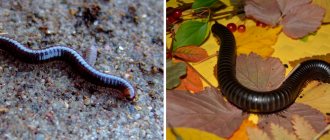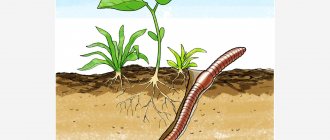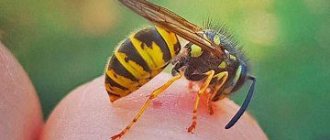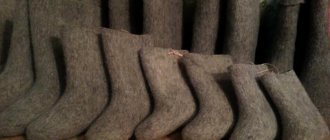Description, development, reproduction
The body color of the nodule can range from light brown to black. Their body is cylindrical or very close to this shape, like a worm, and can consist of 30 or more segments. The organs of vision are represented by two separate eyes, sometimes absent. Each segment contains two pairs of legs, with the exception of the three front ones.
Females and males have some differences in appearance. Males have homopods - modified legs that serve for external-internal fertilization. They are located in the inner part of the head segment.
When moths sense danger, they secrete a substance with a strong, unpleasant iodine odor. Many animals use this. For example, lemurs scare centipedes and then rub themselves on them to ward off predators. It has been noticed that the brighter the pest, the stronger its smell. Kivsyak can leave dark spots on the body that do not wash off for several days.
Habitats
Animals living in temperate latitudes usually live in litter - wood, grass, leaves, which also becomes their food.
Most of them are in deciduous, mixed forests, and forest-steppe zones. They rarely go to a depth of more than 30 cm. The arthropod does not tolerate direct sunlight. When cold weather sets in, the pest burrows deeper into the soil, where it remains until spring.
Stages of development
Kivsyak lays eggs in the soil. The larvae that hatch are no different from adults, only they have fewer body segments. It increases in length with each subsequent molt.
The female's fertility decreases under unsuitable conditions - low air humidity, lack of nutrition. If the conditions are favorable, then the nodule can live ten years or more.
Kivsyaki have 5 superfamilies and several families. Some species are poisonous.
Description of the giant black nod
In appearance, the giant black nodule resembles a worm with a well-defined head and a large number of legs.
There are antennae on the head, which are organs of touch and smell. There are small eyes on the sides of the head.
Giant African centipedes have up to 400 legs.
The body consists of segments, so at first glance the color of the African nod appears to be striped.
The body is protected by a shell made of calcium carbonate. The thickness of such a protective cover can be 35 millimeters. The main body color is black, but it may have a reddish or orange tint. Young nooses have a gray body color. Giant African nods are slow and clumsy. If the nodule is in danger, it does not try to run, but curls up into a ring.
Harm and benefit
Arthropods should not be considered solely as pests. After all, in one season, grasshoppers can process up to 50% of plant waste, providing the soil with minerals and promoting the formation of soft humus. This soil is useful, for example, for rose bushes. But as soon as the moisture balance is disturbed, the arthropod turns into a malicious pest.
Kivsyak is an extremely voracious pest. During the day he eats a portion of food that is one and a half times his weight.
An animal living in the soil damages the root system of seedlings - tomatoes, cucumbers, strawberries, wild strawberries. Therefore, terrestrial organs do not receive enough nutrients. As a result, the development of plants stops, they gradually wither and die. Moreover, he will covet
In addition to roots, it feeds on strawberries and cucumbers lying on the ground or near its surface. When there is a shortage of food, centipedes can feed on green shoots and seeds. They even harm young trees - apple trees, pears, melons, tomatoes, raspberries.
Expert opinion
Mityuk Stefania Bogdanovna
Not everyone is trying to get rid of their kinks. There are people who breed them at home. Exotic lovers are attracted to invertebrates by their unusual appearance. The African species of these arthropods are especially beautiful.
The harm of the nods
When the population of grasshoppers in the garden becomes numerous, arthropods begin to damage the roots and root crops of plants, the larvae eat rotten and whole fruits, making tunnels in them.
Damage to the root system by centipedes leads to inhibition and subsequent death of the plant. First, gray and black spots appear on it, gradually merging into a single whole, then the culture dies off.
Most often, people in the country or in the garden choose the following crops:
- strawberries;
- beets;
- zucchini;
- potato;
- tomatoes;
- melons;
- flowers.
They are practically not found on onions and garlic. Only early onion shoots can be damaged if there is no other food source. Pests plague gardeners both in open ground and in greenhouses. In a private home you can choose indoor plants.
Many people wonder if centipedes are dangerous. Kivsyak is practically not dangerous for humans. If a creature feels aggression, it secretes a liquid with a specific odor of iodine. When it comes into contact with the skin, it provokes short-term itching and redness.
Pest control methods
Because of the chitinous “body armor”, it is quite difficult to fight the pest that has chosen the site.
Chemicals
In this case, they do not always bring the same effectiveness as in the fight against other pests. The reason for this is the same chitinous shell that covers the body of the invertebrate. However, chemicals can be effective against larvae that do not have a chitinous coating.
Spraying the stems and treating the seed rarely produces results. The fact is that the animal only gnaws the roots of plants.
Aktofit
The active ingredient is aversectin C. The product is used for open and closed ground, and allows you to obtain an environmentally friendly harvest. Avermectin is a neurotoxic poison produced by the soil fungus Streptornyces avermitilis. It enters the pest's body through intestinal or contact routes.
Decis
The active ingredient is deltamethrin. The drug affects the nervous system of the pest through intestinal and contact exposure. Decis acts extremely quickly - from a few seconds to several minutes.
Karate
The active ingredient is lambda-cyhalothrin. A broad-spectrum drug is used for treating plants, disinfecting areas and storage facilities. Has a pronounced knockdown effect. Can be used in tank mixtures, fungicides, insecticides, but it is worth considering the timing of use, and also make sure the compatibility of the drugs.
The application rate depends on the crop being treated. The period of protective action is from 3 to 7 days.
Zemlin
The active ingredient is diazinon. The drug is developed against soil-dwelling pests. It is mixed with sand or sawdust and placed in the ground. When planting potatoes, add 1 teaspoon of the product to each hole. Another method of application is to disperse the preparation over the soil and immediately loosen it.
Expert opinion
Mityuk Stefania Bogdanovna
As owners of summer cottages write on the Internet, the same remedies are effective against mole crickets and wireworms. Some users note that a Fas-double designed for ants will help get rid of unwanted guests.
Folk remedies
Gardeners suggest using vegetable baits. Pieces of vegetables - potatoes, carrots - are treated with insecticides and scattered around the area. The bait is changed regularly. It is better to leave pieces of vegetables under boards or plywood. This method has a drawback - it is only effective for a small population of nooses.
It has been observed that centipedes love damp places. Therefore, in order to collect them in one place, “sheds” are made of boards, under which the ground is always wet. The invertebrate emerges from the ground onto the boards in the evening, and all that remains is to collect the animals and destroy them.
How do you fight the noobs?
ChemicalPopular
Kivsyakov are lured into “compost pits”. Small trenches are dug in the garden and organic waste is left in it, which attracts centipedes.
Before collecting the pest, it is better to wear protective clothing and disposable gloves. If a foul-smelling liquid gets on clothes, it is very difficult to get rid of it, especially if we are talking about albinos.
If there are a lot of pests on the site, it is recommended to water the soil around the potato beds with a solution of calcium chloride or salt before hilling.
How to get rid of nooks in the country
And although kiwis are completely safe for humans, they are absolutely not safe for most crops grown in the garden. They can eat potato roots, raspberries, and strawberries are especially affected by them. Because of this, many summer residents are looking for a way to get rid of strawberries. Their weak jaws do not allow them to chew even leaves, so they prefer the pulp of ripe berries.
Usually the beds are protected quite simply:
- Strawberry bushes must be tied to pegs; the fruits must not touch the ground and rot.
- Row spacing needs to be loosened periodically.
- Weeds should be uprooted and removed.
Greenhouses and conservatories suffer the most from nocturnal insects, since rotted leaves are one of the favorite types of food for these parasites.
And once they have multiplied, they begin to spoil other domestic crops. You can get rid of them in various ways; it is worth considering the most popular and effective ones.
Lures
This method is very popular among the people. The idea is to feed the parasites small pieces of root vegetables that will be pumped with insecticides. This method of dealing with nodule without treating the entire area looks simple at first glance. But you will need to constantly look after the traps: maintain the desired level of bait humidity, protect them from rain, periodically update them and collect the baitfish.
In this regard, the method is simplified. Dig small (up to 10 cm deep) funnels or grooves. Empty jars are placed at the bottom. If you try to crawl over the trap, the parasite will simply fall to the bottom and will not be able to get out. The owner of the site can only collect them periodically.
You can use soft pieces of potatoes, carrots or other vegetables as bait. The creation of artificial shelters can greatly facilitate the task of catching large individuals of the noose, especially if they appeared on the site relatively recently and have not yet had time to breed, in which case it is even possible to completely clear the dacha of them. But if several colonies of these creatures coexist in one area, then destruction in this case can imperceptibly turn into breeding.
Compost pits
The bait method was also able to get quite an interesting development. In addition to traps, you can use pits, such as compost pits. They need to be filled with various organic wastes that will attract nooks.
The resulting mixture must be regularly stirred, moistened and new layers added. If you cover it with a layer of turf, you will create an unfavorable environment for the noose.
The effectiveness of exterminating insects largely depends on the layer-by-layer treatment of compost with chloride salts, such as sodium or potassium.
When late autumn arrives, compost is usually spread over the surface of the beds to freeze. This method is quite effective and makes it relatively easy to get rid of parasite colonies every year.
Chemical treatment
Tilling the soil will not guarantee getting rid of grasshoppers; the reason for this is their durable chitinous shell. However, larvae and young insects may die from the effects of the drugs. The approximate period from processing to death of the noose is from 5 hours to 5 days. Therefore, it is important to choose the right herbicides to get rid of pests.
As an option: the composition “Aktofit”, or “Karate” or “Grom-2”. Chemical compounds are unsafe, but if you treat the planting holes, you can achieve a better effect with minimal harm. Chloride salts are the most environmentally friendly method of solving the problem. It is enough to add the substance to the soil in the evening, when insects begin to emerge from their shelters. This will cause them to begin to die. If used correctly on the site, this method can quickly expel the nooses, but it is advisable to repeat the procedures regularly throughout the season so that they do not return.
You should not treat the stems and seeds; this will have no effect. The grasshopper does not eat the plant, it bites more of it, which is why the poison may not have an effect.
Prevention
It is easier to prevent kiwis from entering the garden than to get rid of them later. Therefore, you need to follow these site processing rules:
Liming the soil to a depth of 20 cm will help clean the soil from the pest.- After harvesting the autumn harvest, plant residues, especially weeds, are removed from the soil before planting crops.
- Late autumn plowing and earlier spring cultivation raises heat-loving pests - they die from the cold.
- From time to time it is useful to sow green manures - green fertilizers - on the site. In this capacity, you can use white mustard, yellow lupine, peas, and sunflower.
- Mulching and agrofilm will protect ground crops from pests.
- Organic fertilizer (manure, humus) must be carefully inspected before applying to the soil, since the pest can enter the site in this way.
Lime consumption rates for liming (kg/sq. m):
| Acidity, pH | Clay, loam | Sands, sandy loam |
| Less than 4.0 | From 0.5 | 0,35 |
| 4,1…4,5 | 0,4–0,5 | 0,25–0,3 |
| 4,6…5,0 | 0,3–0,4 | 0,2–0,4 |
| 5,1…5,5 | 0,3…0,25 | They don't contribute |
| 5.5 and above | They don't contribute | They don't contribute |
Before liming the soil, it is necessary to clarify the conditions for growing the crop. If you need acidic soil, then it is better to avoid liming, since the pH increases after such treatment. Such crops include, in particular, rhododendron, blueberries, azaleas, and potatoes. Also, you cannot add lime at the same time as digging up green manure.
All construction waste must be removed from the garden - boards, slate, bricks. Invertebrates usually live in these mini-dumps.
The fruits of strawberries and cucumbers will not be damaged if you tie up the vines and install supports. Water the soil moderately and do not over-moisten it. The harvest is harvested in a timely manner, without allowing the fruits to fall off.
As already mentioned, grasshoppers start in manure heaps and compost pits. To prevent the pest from entering the garden, the fertilizer must be prepared correctly. So, the manure pile needs to be watered and mixed. Then a temperature of 60°C or higher is created inside, causing the centipede to die.
When preparing composts, the components - food waste, peat, sawdust, etc. - are stacked in layers, each sprinkled with superphosphate, potassium chloride or watered with a solution of table salt (take 1 liter of salt per bucket of water).
Owners of summer cottages noticed that centipedes crawl out of the ground in the rain, like worms. After a rainstorm, they can be collected by hand and destroyed.
Prevention against Enchytraeus
Monitor the watering of plants and do not allow the soil to become waterlogged. Use only heat-treated garden soil to prepare soil mixtures.
To protect plants from earthen pests and various fungal diseases, garden soil must be calcined or steamed before use. It's not the same thing. You can calcinate the earth in the oven or microwave by simply scattering it in a thin layer on a baking sheet. Steaming is steam treatment in a water bath. Pour water into a large saucepan or bucket and bring to a boil. A cup of soil is placed over hot water and steamed for some time (at least half an hour).
Using ready-made store-bought soil mixtures cannot provide a 100% guarantee that flower worms will not grow in it. With constant waterlogging, enchytraeus grows even in purchased soil.
In summer, when you move plants into the garden, use different trays to prevent the pots from touching the ground. In addition, you need to ensure that water does not stagnate in the trays after watering. In the fall, before bringing plants into the room, quarantine them.
Image rights belong to de.wikipedia.org, en.wikipedia.org







